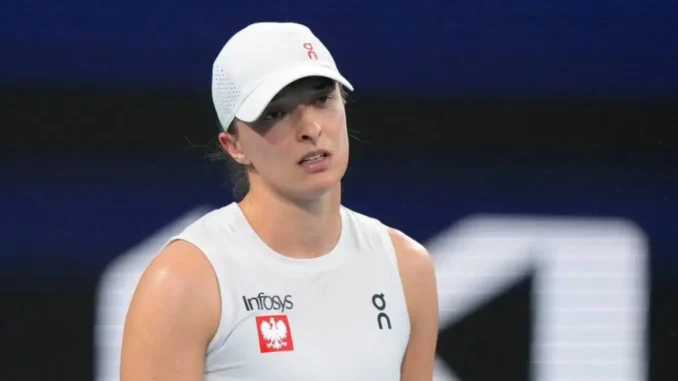
Iga Swiatek, the current dominant force in women’s tennis, has recently found herself the subject of scrutiny regarding a particular aspect of her formidable game. According to a former coach of the legendary Serena Williams, a key shot in Swiatek’s arsenal has become overly predictable and, surprisingly, has shown a lack of significant evolution. This assessment from a seasoned veteran of the sport’s highest echelons raises intriguing questions about the ongoing development of the world number one and how her opponents might be looking to exploit this perceived stagnation.
The coach, renowned for his work with one of the greatest players of all time, did not mince words when discussing this specific element of Swiatek’s play. He suggested that while the shot in question may have been highly effective in the past, its lack of variation and discernible patterns have made it increasingly readable for her competitors on the WTA Tour.
“That shot is so predictable,” the coach reportedly stated, highlighting the concern that top players are now anticipating this particular weapon with greater ease. This predictability, he implied, could potentially limit Swiatek’s effectiveness in crucial moments and against opponents who have meticulously studied her game.
Furthermore, the coach expressed surprise that this particular shot has not undergone more significant development over time. In the relentlessly evolving landscape of professional tennis, players are constantly refining their techniques and adding new dimensions to their games. The suggestion that a key component of Swiatek’s play has remained relatively static is a notable observation from someone with such a deep understanding of the sport’s nuances.
“It has not developed at all,” he purportedly added, underscoring the notion that this aspect of Swiatek’s game may have become a potential liability against opponents who are adept at recognizing and neutralizing predictable patterns. This lack of evolution could provide a tactical advantage to those facing the Polish star, allowing them to anticipate her moves and position themselves more effectively on the court.
While the specific shot in question was not explicitly identified, the coach’s comments suggest it is a fundamental part of Swiatek’s game that she relies on frequently. This could potentially be a particular serve variation, a specific groundstroke, or even a tactical pattern that has become too ingrained and therefore easier for opponents to decipher.
These observations from a highly respected figure in the tennis world carry significant weight. Serena Williams, during her illustrious career, was known for her constantly evolving game and her ability to adapt her strategies to counter the strengths of her opponents. The fact that her former coach is now pointing out a lack of development in Swiatek’s game is a noteworthy point of discussion within the tennis community.
It remains to be seen how Swiatek and her coaching team will respond to this assessment. Swiatek has consistently demonstrated a strong work ethic and a willingness to learn and improve. Her rapid ascent to the top of the rankings is a testament to her dedication and talent. However, the comments from such an experienced coach serve as a reminder that even the most dominant players must continually evolve their games to stay ahead of the competition.
The WTA Tour is filled with astute strategists and players who are constantly looking for weaknesses to exploit. If a key shot in Swiatek’s arsenal has indeed become predictable, it is likely that her opponents will increasingly look to target this aspect of her game. This could lead to more challenging matches for the world number one and potentially open the door for other players to challenge her dominance.
Ultimately, the ability of a top player to adapt and evolve is crucial for long-term success in professional tennis. Iga Swiatek has already proven her ability to reach the pinnacle of the sport. The question now is whether she can address this perceived predictability in her game and continue to develop her skills to maintain her position at the top of the women’s rankings. The coming months will undoubtedly provide further insights into this aspect of her game and how her rivals attempt to capitalize on this potentially exploitable pattern.
Leave a Reply